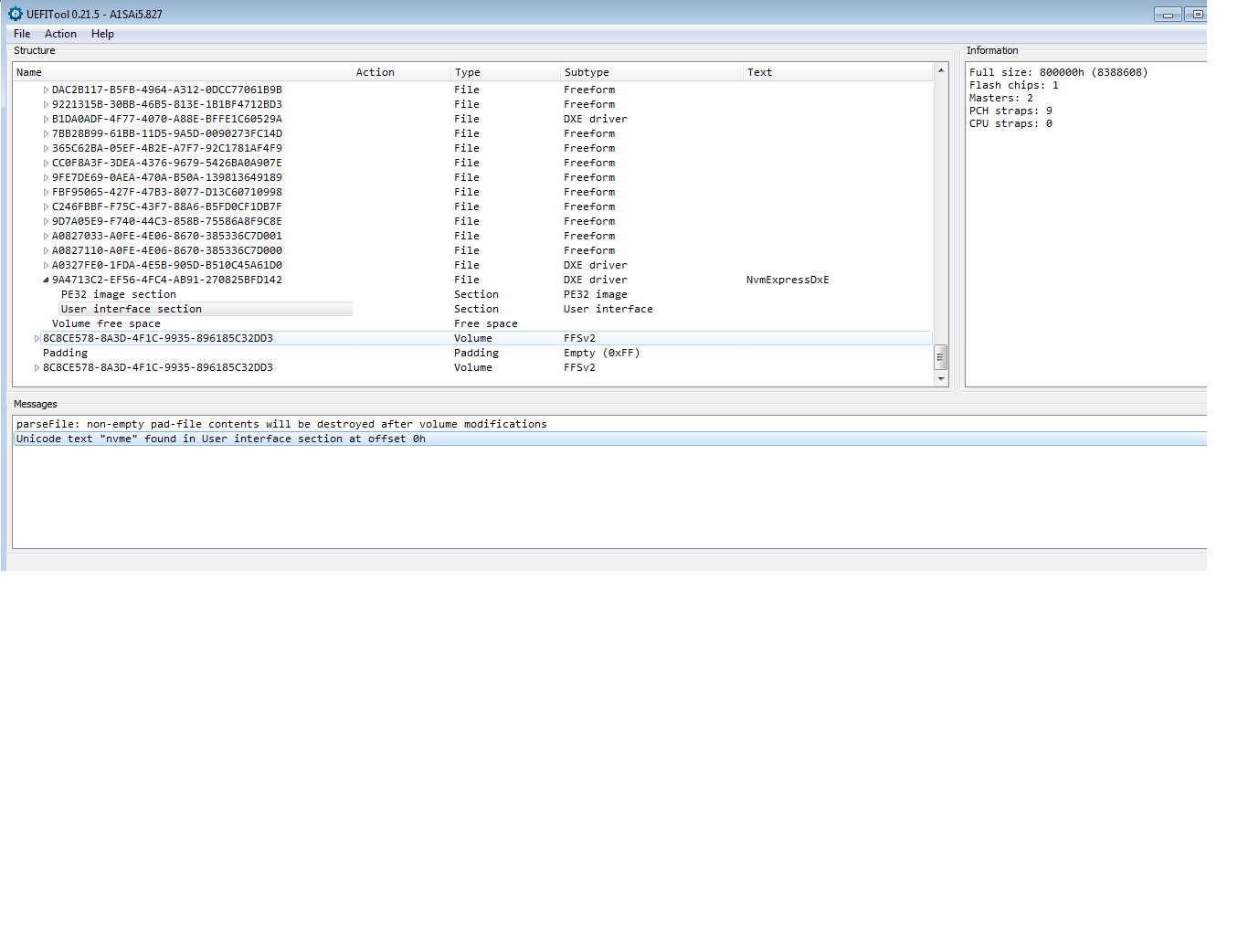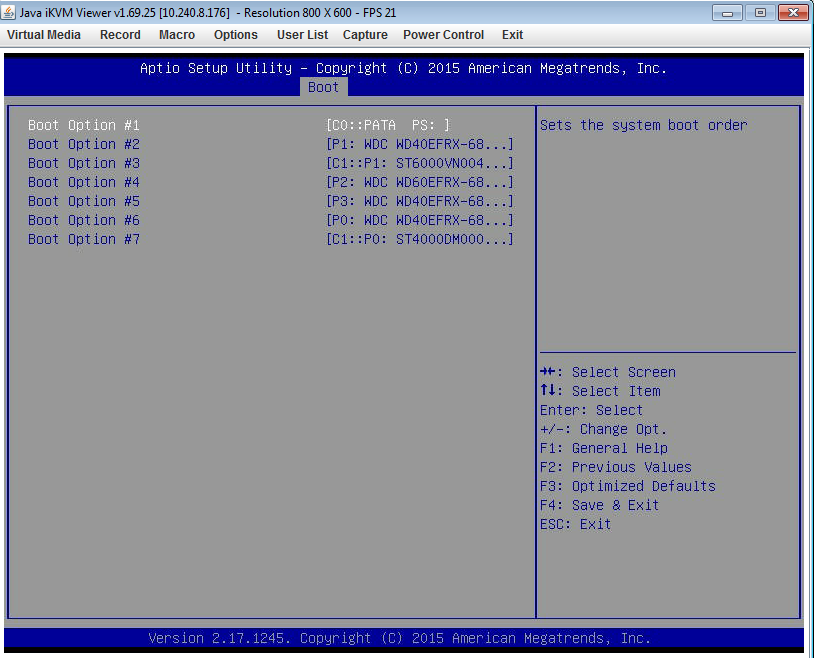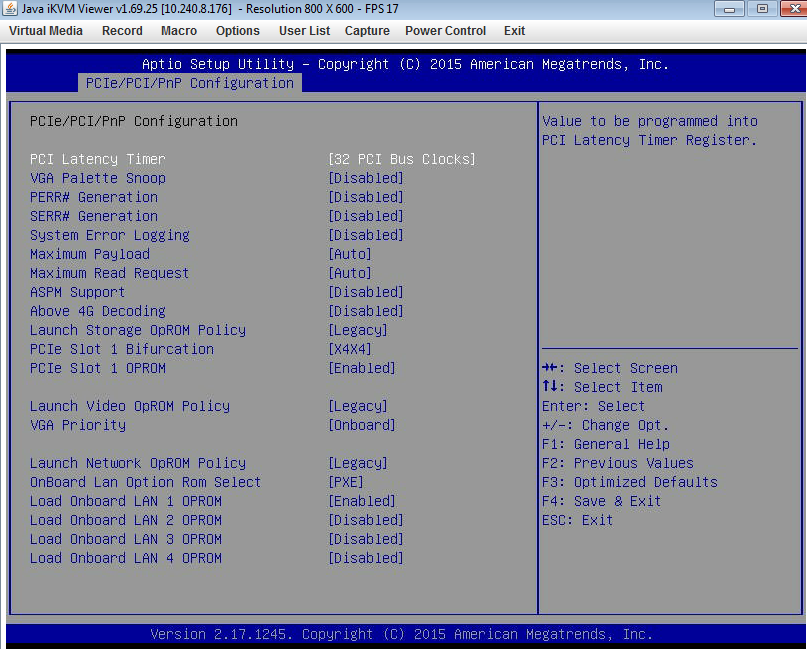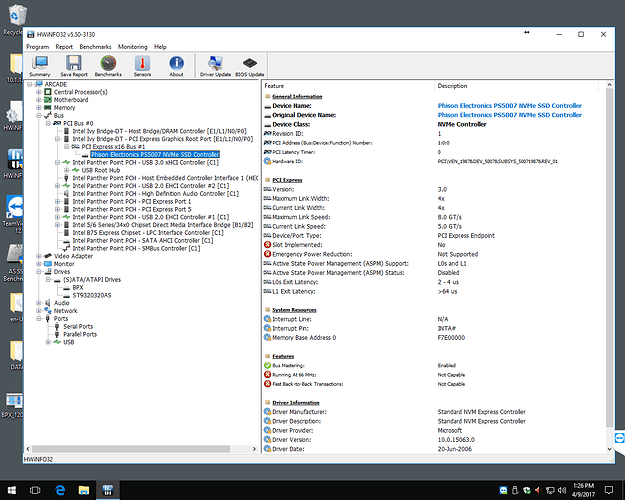Yeah, I thought the same thing, even though I have it in the one ‘3.0’ x16 slot. There is one other x16 slot which is 2.0, so I checked the slot info using HWInfo and it’s showing the slot / Drive is running at 3.0.
>Here< you can find my tips about how to boost the performance of an SSD. Although these tips were written for the usage of SSDs running in AHCI mode, nearly all of them are valid for NVMe SSDs as well.
For those struggling to get NVME working on the Gigabyte GA-Z87X-UD4H, here is my little contribution to this thread 
==> Gibabyte GA-Z87X-UD4H NVME bios (based on 10p)
This is a fully-working-modded BIOS, based on Z97-related one, without support of wake on lan features, in order to get space for NVME-related code. I run it with a samsung 960 evo 500GB, placed on second PCI-E slot (to get 3.0 support and the 3GB/s of read-bandwitdthd).
@Alahel :
Welcome at Win-RAID Forum and thanks for your contribution!
Maybe you should offer your modded BIOS within >this< special Sub-Forum.
Regards
Dieter (alias Fernando)
I myself have the UD5H version of that board and didn’t need any mods to get either the Plextor M8PeY or the Adata SX8000 NVME drives to startup.
Most likely those drives had compatible legacy firmware I’m guessing. Not sure how it would fare with a Samsung Nvme drive or an Intel…
Done, thanks for advise
Hi guys, I´m so frustrated cause this works for me before, but now I can not make it work  . This is the problem:
. This is the problem:
I did a formatting of m.2 for reinstall windows 10, everything ok, but the big trouble is that i can´t boot in UEFI mode. The big and disturbing message appears again and again NO Booteable device is dectected. System will enter the bios Setup Utility. So I try CSM enabled and SS PATA: appears in boot menu, I setup windows 10 but the installation won´t start, the next message appear 'Windows cannot be installed to this disk. This computer’s hardware may not support booting to this disk. Ensure the disk’s controller is enabled in the computer’s BIOS menu. Ok I reset the PC, select UEFI compatibility but I can´t access to the disk always say the same thing No booteable device Found.
I reflashed bios 2 or 3 times, I try in different pci-exp ports, but nothing work. Just say No booteable device Found. So sad 
please help me thank you guys
Today I did the mod and it works with my Samsung 960 Pro 512 GB NVME drive and Asus Maximus VI Extreme mobo! I was busy so I couldn’t do it sooner.
Thanks for the excellent guide and caring more than the actual mobo manufacturers to get NVME working properly on older mobos!
How did you do it?
You cannot boot into your NVMe SSD in Legacy mode. The Boot Menu must show "Windows Boot Manager".
That was not a good idea. Which BIOS did you reflash (an original or the successfully modded one)? Did you recover the previous settings, which let you install Win100 onto your NVMe SSD?
I suspect, that it is a wrong BIOS setting, which has caused your current problem.
@sal-onE :
Thanks for your feedback! It is fine, that you succeeded.
Enjoy the performance of your NVMe SSD!
Thanks Fernando and everyone for the help! I’ve tried most of those tips and after a little bit more experimenting, I may just have to chalk these lower speeds I’m getting on the drive up to the GA-B75M-D3H itself. I popped the drive / Add in Card into another system I have and got the full 2300 / 1300 MB/s Read/Write speeds. So there’s definitely not a bottleneck on the drive or add in card. One thing I did notice is I definitely get different speeds based on the benchmarking tool I use. CrystalDiskMark (5.2.1 x64) is getting 1700/1300 MB/s Read/Write speeds while running Anvil (1.1.0) right afterward, only gets me 1400/1000 MB/s speeds.
Anyone else noticed a drastic difference in benchmarking results between different tools?
The benchmark result differences you get by running different tools are quite normal, because each benchmark tool uses different methods and different test files (big/small sized resp. compressible/not compressible).
So if you want to compare the performance of different disk drives, you have to use the same benchmark tool.
By the way: Not the benchmark tool, which gives you the highest scores, is the best.
I personally prefer to use Anvil’s Storage Utilities, because this tool
a) gives the user a lot of additonal informations (incl. checking of the drive’s alignent) and features (incl. TRIM trigger),
b) simulates very good the conditions while doing the daily work and
c) doesn’t stress the system too much.
Hi,
This is my first post, so I want to thank Fernando and other members for all the precious informations we can find on this forum.
I’m trying to add NVMe support on my Asus Maximus VI Impact (LGA 1150 - Z87 mini-ITX, Bios 1603) in order to install a Samsung 960 Evo 250 Go.
My full system is :
− Intel i7 4770k,
− Gskill Trident X series DDR3-2400 (8gb)
− Gygabyte GV-970IXOC
− Thermaltake Smart SE 530W
On my first attempt, I tried to boot directly from the SSD. I had no picture and the onboard CPU red led was flashing. Obviously, system didn’t boot at all, as the error code was 00, wich means it didn’t even starded
So I tried booting with an old HDD and after unplugging the 960 Evo, everything went fine. No red light and no error code.
After some failling bios tweak, I decided to load « optimized default » and then mod the bios as described in first page, with the first module : >uncompressed NvmExpressDxE_2 module GUID 9A4713C2<.
Flashing the modded bios wasn’t possible with EZ-UPDATE. So I finaly did a Bios Flashback which seemed successful but after I plugged my SSD I was granted with the same error (Red Led and error code).
So I tried the method describes here : http://www.overclock.net/t/1571271/tutor…n-intel-chipset. The extracted module came from an Asus Maximus VIII Impact (Z97).
Again, I couldn’t flash with EZ update and tried with bios Flashback. Again, same error on boot attempt.
Right now, it’s impossible to boot with the 960 Evo plugged-in, even when a Sata HDD is also plugged.
What am I doing wrong?
Is there a way to be sure that the mod bios is correctly installed?
Must I try to extract another Nvmexpress module from another board?
Thank you.
@Pyves :
Welcome at Win-RAID Forum!
This question can only be answered by somebody, who watched you, when you tried to make your NVMe SSD bootable.
You will only be able to boot off your NVMe SSD under the following conditions:
1. Your mainboard BIOS must contain a suitable EFI module (best choice: NvmExpressDxE_2), which will be loaded while booting in UEFI mode.
2. The BIOS settings must allow the booting from the NVMe SSD (Fast Boot and Secure Boot have to be disabled, the Compatibility Support Module = CSM must allow/prefer booting in UEFI mode).
3. Windows 10 (incl. the Windows Boot Manager) has been successfully installed in UEFI mode onto the NVMe SSD.
The user can verify whether the USB Flashback procedure worked or not by watching the blinking of the USB Flashback LED (should blink for 1-2 minutes and then stop blinking). After having successfully flashed the modded BIOS, you probably will see a new storage device named "PATA" or "PATA SS" within the BIOS.
No, I recommend to just follow my continuously updated guide, which is within the start post of this thread.
As you have already realized yourself, the insertion of any other NVMe module didn’t solve your problem.
Regards
Dieter (alias Fernando)
thanks fernando just bought samsung 960 pro and m.2 adapter my MB maximus vi hero
i failed in the steps cant mod a bios to use it
can i ask anyone to upload it here or pm ? thanks
Hey all,
Great guide. I am trying to get this working with a Supermicro a1sri-2758f mobo but haven’t had any luck yet. I’ve successfully modded the bios and reflashed but still can’t boot from my nvme drive. Some more info about my system:
MOBO: a1sri-2758f (Octal core C2758 Atom processor embedded)
NVME: Intel SSD 600p Series 128GB, SSDPEKKW128G7X1
PCIE Card: Silverstone Expansion Card Model SST-ECM21
I can’t upload the modded BIOS, so I’ve attached a screenshot of the relevant section.
I have 6 HDDs and the NVMe installed in the system. When I enter BIOS it recognizes the seventh device, but strangely it seems to think it’s PATA? See the bios.png screenshot attached. Also attached is a shot of the pcie settings page. From there, I’ve tried several combinations with the same result every time:
Launch Storage OpRom Policy: Legacy/UEFI
PCIe Bifurcation: Auto/X4X4 ---- Understand this would probably have no effect, just a desperate shot in the dark
PCIe Slot 1 OpRom: Enabled/Disabled
When attempting to boot from the device I always get ‘This is a NAS disk…’ which I assume is actually the system falling back to the next available HDD which is part of a ZFS pool.
Any help is appreciated. In reading your original post - it sounds like you are saying there may be some nvme drives that might work out of the box (samsung pro 950 series). Am I understanding you correctly there? If so, do you know any other devices that support legacy mode with OpRom enabled that are a little less on the expensive side? I don’t really care about the performance so much as the form factor and not using a USB drive to boot from.
Thanks!



I think the Duet method would work best for you. Doesn’t look like an Uefi bios.
@Fernando
Thank you.
I think I did everything but the system never started with NVMe SSD plugged in and the board didn’t reach the P.O.S.T. Maybe my board or the SSD is faulty. I’ll ask a RMA for the drive.
@jaknoll :
Welcome at Win-RAID Forum!
It seems to me, that you haven’t yet tried to install Win10 onto the NVMe SSD in UEFI mode. This is a pre-condition, because the NVMe module, which is now within your mainboard BIOS, will only be loaded, if you boot in UEFI mode.
This is normal and verifies, that the NVMe SSD has been detected. No BIOS of an old Intel chipset system shows the NVMe SSD with its correct name. So this is nothing to worry about.
Yes.
No. I have some different NVMe SSD models, but not all available ones. So I don’t have the chance to test it with all of them.
My advice: Try to install Win10 in UEFI mode onto your NVMe SSD.
Good luck!
Dieter (alias Fernando)
@kilzo :
Welcome at Win-RAID Forum!
Why not? Which problem occured?
I am sorry, but we do not modify BIOSes upon request.
Regards
Dieter (alias Fernando)
